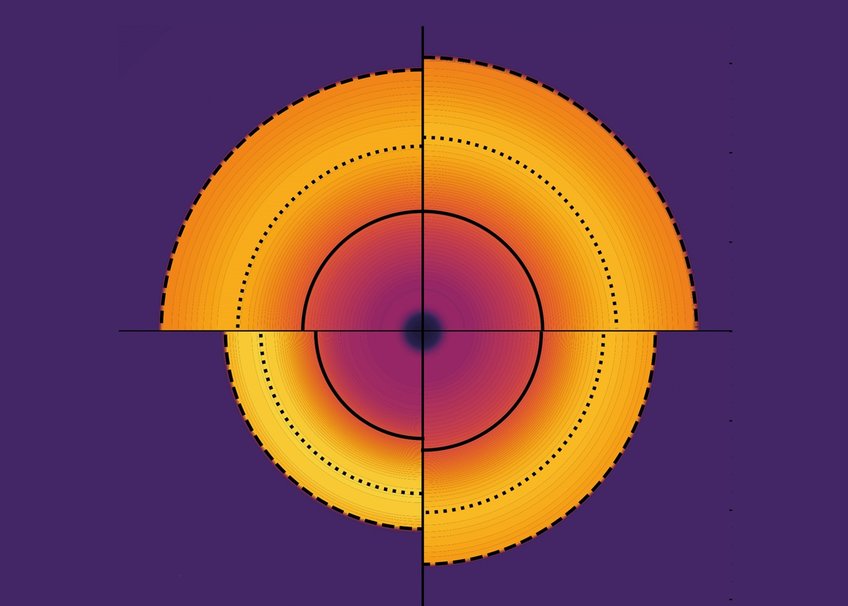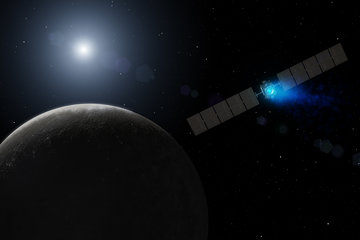Supernova explosions: It's all in the flavor
Research team investigates importance of neutrino flavor changes in supernova simulations
Supernovae, stellar explosions of gigantic proportions, are powered by the lightest elementary particles of all: neutrinos. These come in three different varieties, which are called flavors. Until now, it was assumed that the neutrinos in a supernova retain their current flavor. Recent findings show that the particles can change flavor "spontaneously" in supernova-like conditions. Max Planck researchers have studied how flavor transformations affect supernova processes.

When massive stars have exhausted their fuel for nuclear fusion, the lack of radiation pressure causes their centers to collapse. A tremendously densely packed progenitor of a neutron star is formed. It is only a few dozen kilometers in size - and heavier than our sun. In the collapse, gravitational energy ultimately converts into heat trapped inside. Neutrinos are the only particles that can escape this seething environment - and thus cool the proto-neutron star.
However, a small part of the neutrinos interacts with the stellar matter and heats up the region near the core. If enough energy is transferred in the process, the stellar material expands more and more, igniting the supernova explosion. If the energy input is too low, the star collapses into a black hole.
Neutrinos exist in three flavors (electron, muon and tau neutrino) and interact extremely weakly with matter - the strongest still being the electron neutrino. The other two flavors escape their environment faster and are on average more energetic. It has been known for several decades that neutrinos can change their flavor on their journey through the universe. However, this does not apply to a high-density environment, which also characterizes the interior of a supernova.
Spontaneous flavor changes
But neutrinos can also trigger the flavor change themselves, because so many of them are present in a very small space and self-interactions become relevant. So far, these spontaneous transformations have not been included in simulations of supernovae. A team from the Max Planck Institutes for Astrophysics and Physics and the Niels Bohr Institute has now studied the influence of flavor changes on supernova simulations.
The researchers used a simple approach to integrate fast and efficient flavor changes into the dynamics of supernova simulations. In their study, the scientists simulated a star 20 times heavier than the Sun. In different scenarios, they increased the area near the center of the star where neutrinos can change their flavor and investigated how these large changes affect the overall system.
The authors conclude that the influence of neutrino flavor conversions should be considered in prediction simulations: This is because they could have a decisive influence on the neutrino-driven explosion mechanism. However, it is still too early to draw definitive conclusions. The effects have so far only been studied schematically and not calculated in detail.
The role of stellar structure
In addition, the simulations assume spherical symmetry and neglect the complex flows that occur in real core-collapse supernovae and are known to contribute to a successful explosion. Finally, the fine structure of the progenitor star also plays a role in the supernova event.
The latter two aspects are already the subject of a follow-up study currently under review: This examines multidimensional core-collapse simulations and includes lower-mass stars. Preliminary results suggest that flavor changes in light stars (around ten solar masses) make an explosion more likely and stronger, while in heavier stars (around 20 solar masses) explosions become less likely.












